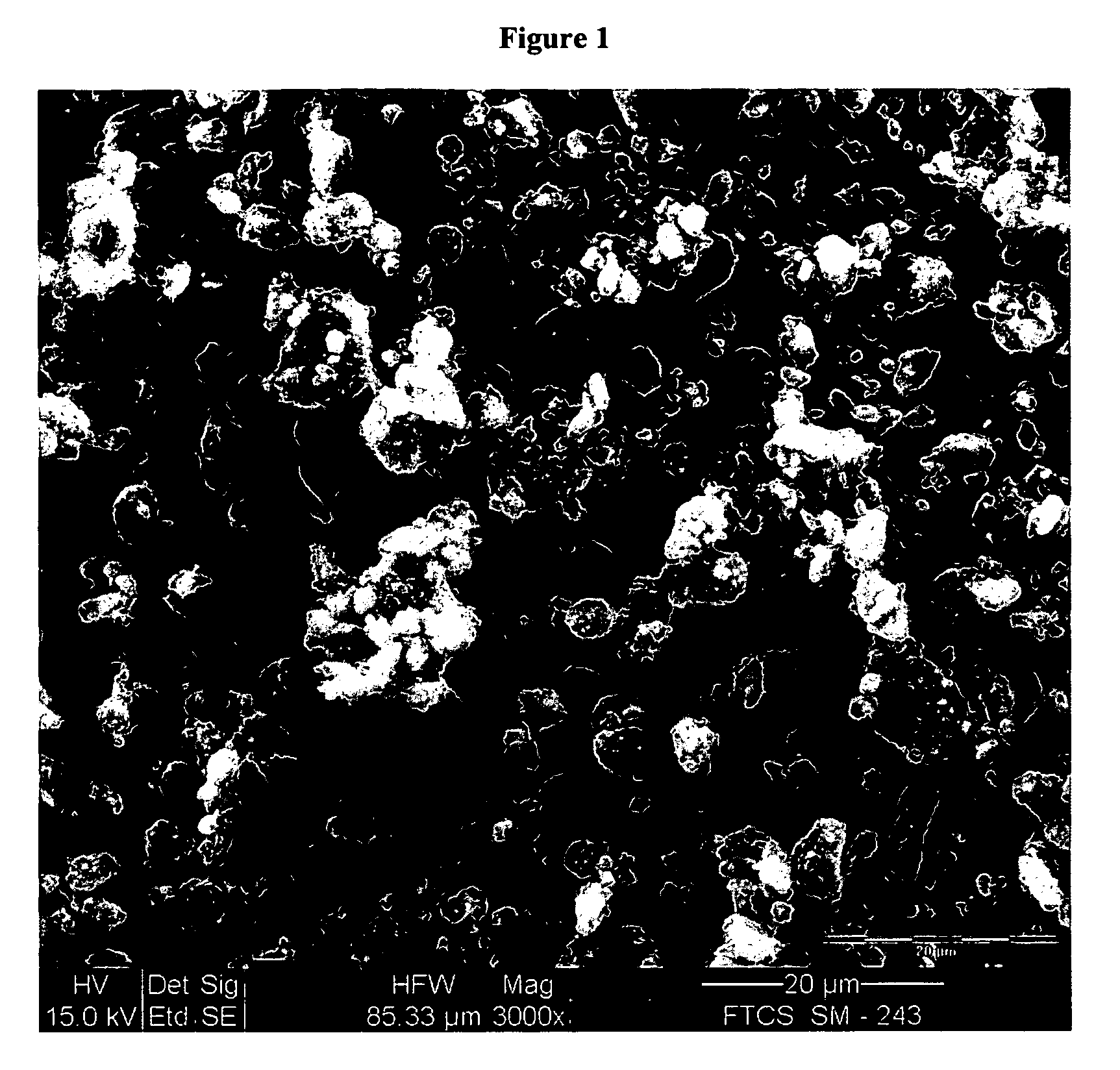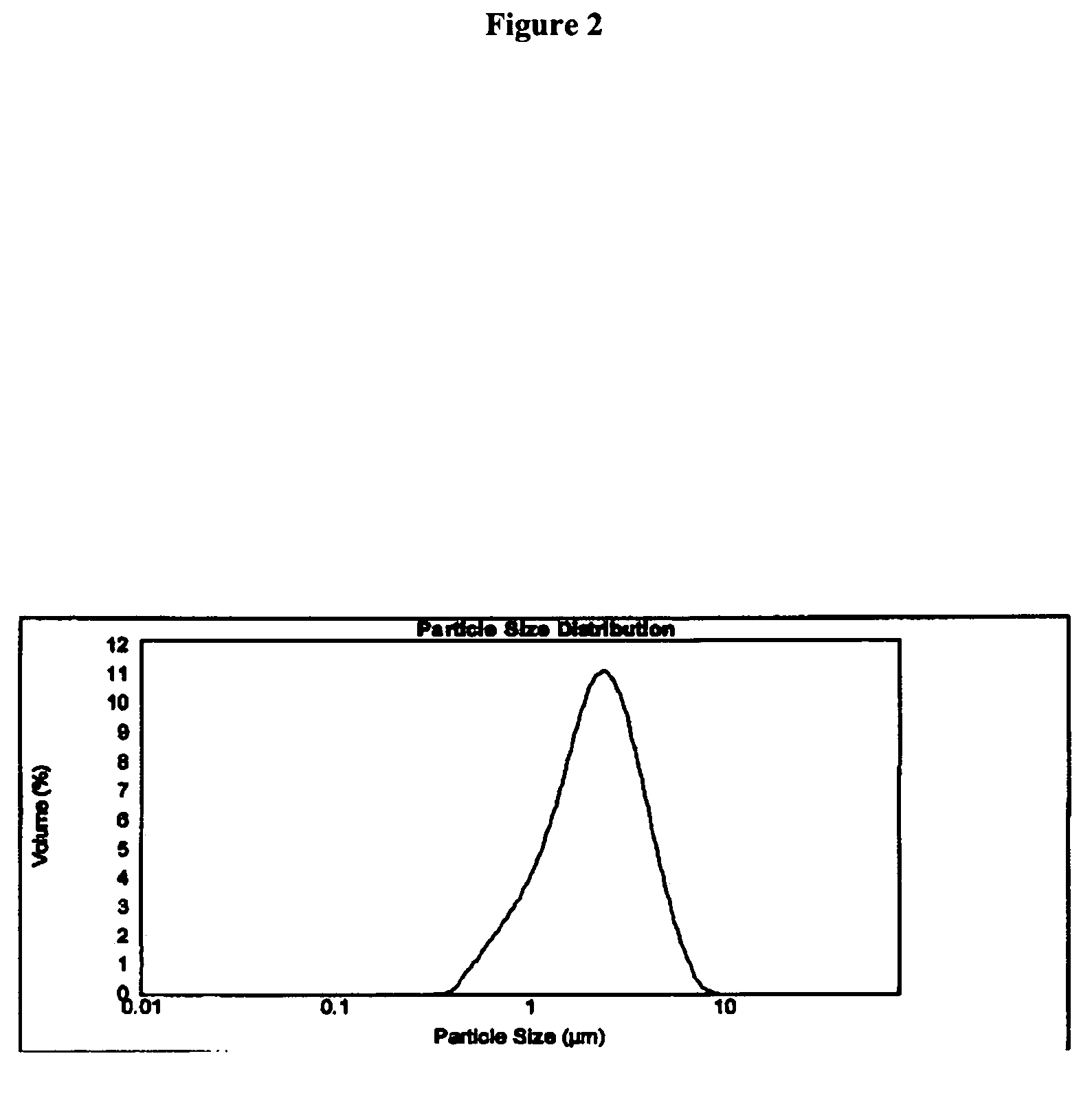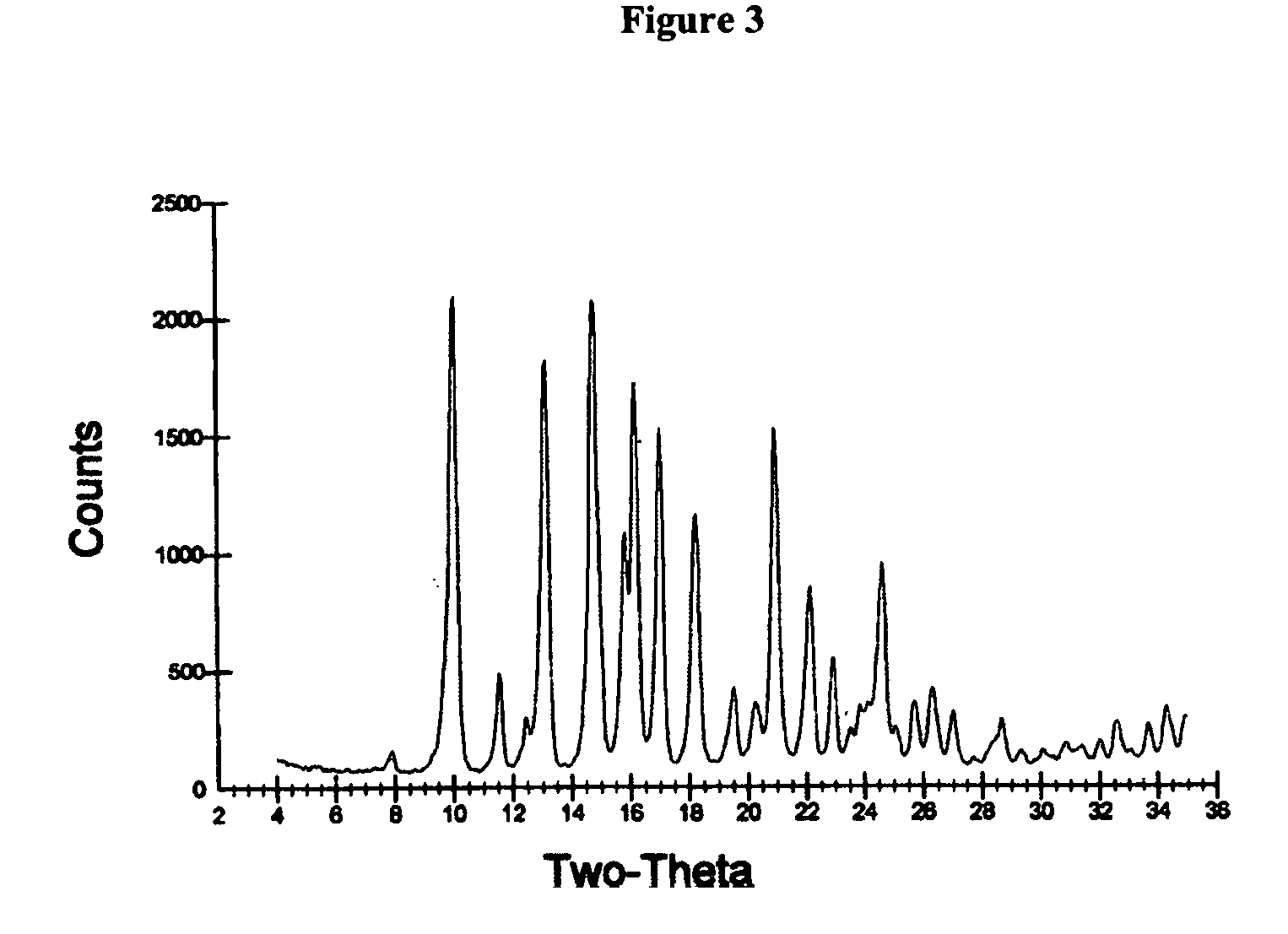Synthesis and powder preparation of fluticasone propionate
a technology of fluticasone propionate and powder preparation, which is applied in the field of improved process of preparing fluticasone propionate, can solve the problems of insufficient commercial scale preparation, low yield, and further limitation of the process taught in this patent, and achieves the effect of high yield
- Summary
- Abstract
- Description
- Claims
- Application Information
AI Technical Summary
Benefits of technology
Problems solved by technology
Method used
Image
Examples
example 1
Preparation of highly pure fluticasone propionate
[0229] Ten (10) grams of (6S,9R,10S,11S,13S,16R,17R)-6,9-difluoro-11-hydroxy-10,13,16-trimethyl-3-oxo-17-(propionyloxy)-6,7,8,9,10,11,12,13,14,15,16,17-dodecahydro-3H-cyclopenta[a]phenanthrene-17-carbothioic S-acid (Compound I) and 50 ml acetonitrile were placed in a 200 ml glass autoclave vessel and the resulting mixture was stirred. Six (6) ml of water and 5.6 ml of diisopropylethylamine were added to the vessel while stirring. The reaction mixture was heated to a temperature of about 50° C. and was stirred for 15 minutes, to afford a clear yellow solution.
[0230] 3.2 grams of chlorofluoromethane were bubbled through a dip-pipe into the stirred mixture and the autoclave was sealed. A pressure of about 0.5 bar was developed while the mixture was heated for a period of 5 hours. During the reaction, a suspension was produced. Thereafter the vent of the autoclave was opened and the mixture was cooled to room temperature. The mixture wa...
examples 2-10
[0232] Using the exemplary process described in Example 1 above, a series of ents with varying amounts of water were performed. The results are ized in Table 1 below:
TABLE 1Weight percents ofadded water (relative to thePurity afterExampleweight of Compound I)YieldPurityCrystallization2 0%6199.5299.523 5%5599.5699.62410%6299.6699.63520%8099.8099.76640%7599.5099.58760%8099.3699.57880%7899.2699.619100% 8199.5099.5610200% 8599.1999.53
example 11
Purification of Compound I
[0233] Fifty (50) ml of a 5% sodium carbonate solution and 25 ml of ethyl acetate were placed in a 250 ml reaction vessel equipped with a magnetic stirrer. Five grams of Compound I were added to the vessel and the reaction mixture was stirred at room temperature for a period of about 45 minutes, to afford a clear biphasic solution. The two layers were then separated by means of a separating funnel and the aqueous layer was cooled to about 12° C. A solution of 4.1 ml of 32% HCl and 4.1 ml of water was added stepwise and the pH was adjusted to 1-2. The resulting suspension was stirred for 30 minutes at about 12° C. The resulting solid was filtered, washed with cold water until the washing solution showed a neutral pH, and dried at 60° C. in an air oven to yield 4.0 grams of Compound I (80% yield) having a purity of 95.7% as determined by HPLC.
PUM
| Property | Measurement | Unit |
|---|---|---|
| Temperature | aaaaa | aaaaa |
| Fraction | aaaaa | aaaaa |
| Fraction | aaaaa | aaaaa |
Abstract
Description
Claims
Application Information
 Login to View More
Login to View More - R&D
- Intellectual Property
- Life Sciences
- Materials
- Tech Scout
- Unparalleled Data Quality
- Higher Quality Content
- 60% Fewer Hallucinations
Browse by: Latest US Patents, China's latest patents, Technical Efficacy Thesaurus, Application Domain, Technology Topic, Popular Technical Reports.
© 2025 PatSnap. All rights reserved.Legal|Privacy policy|Modern Slavery Act Transparency Statement|Sitemap|About US| Contact US: help@patsnap.com



